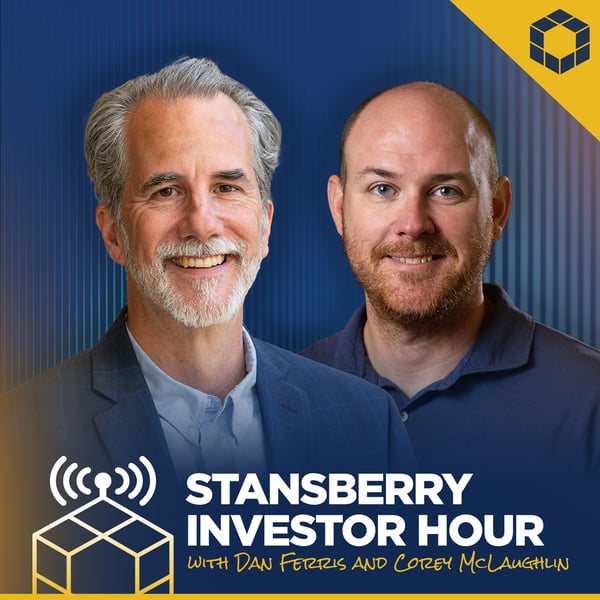How to Be an Above-Average Investor
Stansberry Investor Hour
Stansberry Research
4.4 • 677 Ratings
🗓️ 3 July 2019
⏱️ 73 minutes
🧾️ Download transcript
Summary
This week, Extreme Value Editor Dan Ferris discusses unique thought patterns that can help you become an above-average investor. He also unpacks what’s next at Apple after a key departure and Tesla’s rush to a record quarter. Our guest, Chris Pavese of Broyhill Asset Management chats about a disruption in the car dealership industry he’s poised to pounce on.
Transcript
Click on a timestamp to play from that location
| 0:00.0 | Broadcasting from Baltimore, Maryland, and all around the world, you're listening to the |
| 0:06.1 | Stansberry Investor Hour. |
| 0:11.5 | Tune in each Thursday on iTunes for the latest episodes of the Stansberry Investor Hour. |
| 0:16.6 | Sign up for the free show archive at Investor Hour.com. |
| 0:20.2 | Here is your host, Dan Ferris. |
| 0:22.9 | Hello and welcome to another episode of the Stansberry Investor Hour. |
| 0:26.8 | I'm your host, Dan Ferris. |
| 0:28.2 | I'm also the editor of Extreme Value, a value investing service published by Stansberry Research. |
| 0:34.0 | All right, let's do this thing. |
| 0:35.8 | Now, in episode 103, I talked about mental models. |
| 0:40.3 | Okay, mental models are simply different perspectives on reality. |
| 0:45.3 | They're ways of understanding reality that can help you frame a particular situation and understand different situations. |
| 0:52.3 | They're tools. they're thinking tools. |
| 0:55.6 | Okay, most mental models are designed to help you avoid trouble before it arrives. A lot of them are. |
| 1:02.1 | And we specifically address the circle of competence mental model in episode 103. |
| 1:08.7 | You remember circle of competence? It works like this. You draw a large circle |
| 1:13.4 | and a sheet of paper. Inside that large circle, you draw a smaller circle, maybe a lot smaller. |
| 1:20.7 | And the large circle represents everything you think you know, but don't really know so well. And the smaller circle represents |
| 1:29.7 | what you really know well enough to even claim that you know it. That's your circle of competence. |
| 1:36.4 | And the idea is to focus your efforts in investing in business within your circle of competence. |
| 1:42.6 | Right. So a doctor might have a real big advantage over the rest of us |
| 1:49.0 | when it comes to analyzing health care companies, for example. |
... |
Please login to see the full transcript.
Disclaimer: The podcast and artwork embedded on this page are from Stansberry Research, and are the property of its owner and not affiliated with or endorsed by Tapesearch.
Generated transcripts are the property of Stansberry Research and are distributed freely under the Fair Use doctrine. Transcripts generated by Tapesearch are not guaranteed to be accurate.
Copyright © Tapesearch 2025.

